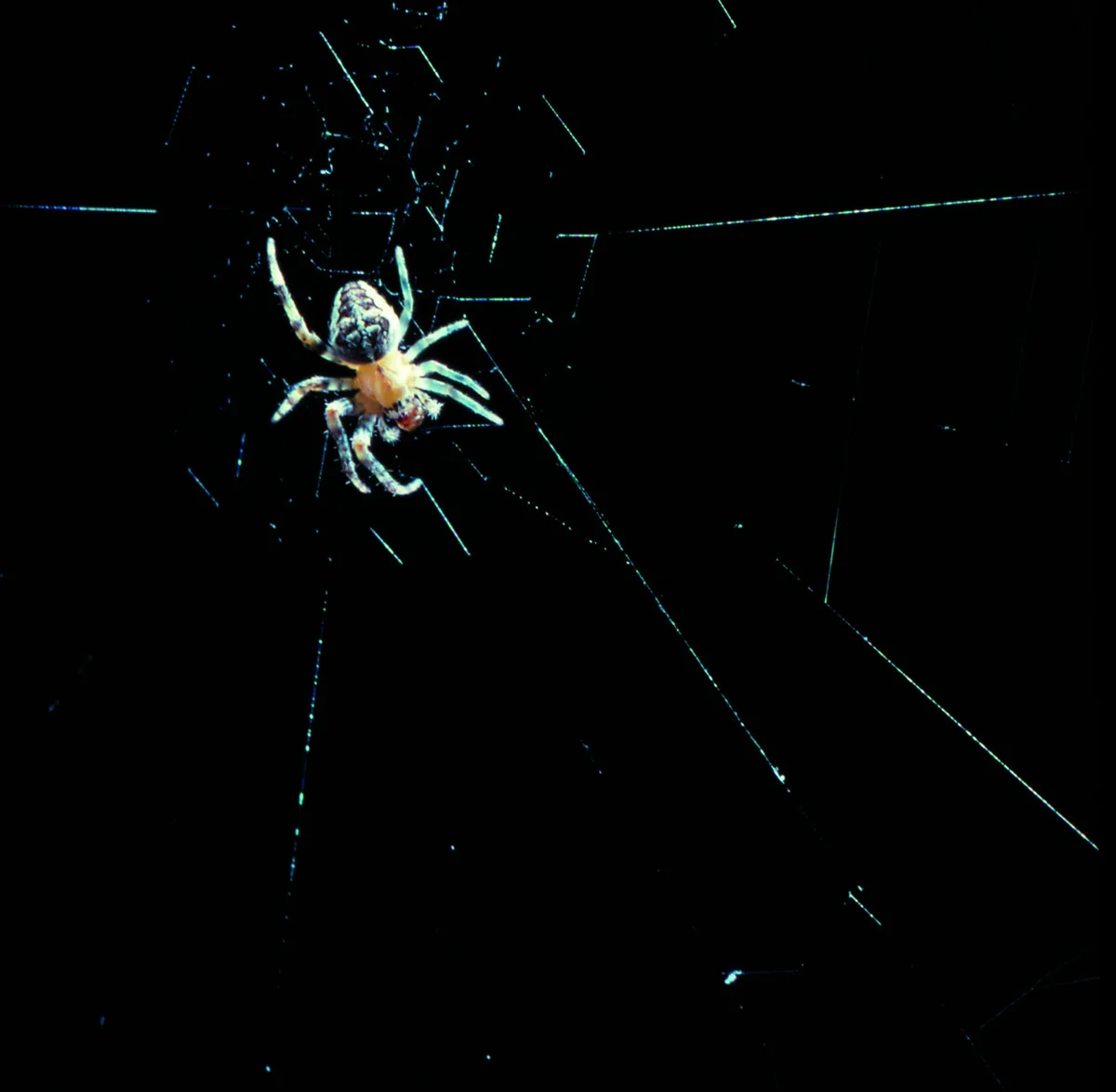- Joined
- Aug 8, 2005
- Messages
- 11,398
(I'm looking for input here since this is nearly as broad a field as spiders themselves)
Shape examples
* Latrodectus, A cob web with three vertical sticky lines. Always the same with minor variations due to environmental considerations.
* Certain orb weavers. Whatever fits. A full orb or partial pie shapes, horizontal, vertical or anywhere in between.
* Agelenidae. The web is just like a baseball or football field or golf course. A groomed customized race track perfectly suited for the size of the spider, it's 'feet' adapted perfectly to the web material, and the webbing itself lending to the spider's ability to sense where there is an object in the web and tell the spider exactly where it is.
* Pholcids. Let's call their webs a demented psychosis. No rhyme, reason or planning; just a mass of threads that the spider slowly builds on throughout it's life. The spider accommodates the labyrinth the webs eventually evolve into with adroit dexterity rather than having a web working towards a master plan.
Then the purposes of the webs can vary greatly.
* To catch food of course! Actually, no. Examining the entire Anaeae order, only the minority of spiders use their webs as traps.
* Salticids never use webs for trapping prey. But they lay a web down everywhere they go as a safety line.
* Nearly all Lycosids use webs to aid in molting.
* Webs are used in a variety of ways for romance.
* Webs are used in defense, sometimes individuals and sometimes great communal webs that can confuse and repel predators.
* Most webs aren't sticky. Sticky threads require a sophisticated biology to produce.
* As a reserve food source. For example, many orb weavers will leave a glop of web in the center as they build their orb. The glob is a protein source the spider eats after the exhausting undertaking of building the web.
I'm going to leave it to others to contribute here.
You defo don't need to keep them in anything. Mine has been pretty happy on the door. I think so long as they are catching something they won't move on.
The relationship between the spider, the web, and the environment is a vast intricate world unto itself. The webs may stay almost exactly the same within the entire genus or they can vary drastically from one individual spider to the next.I also read on your forum that they won't adjust a web size. Mine has, a few times.
When there was two on the door, the one i have now was really trying to spread her web around the door. This caused the other spider to make her web smaller and smaller and eventually she moved from the door up into the corner on the wall.
The spider advanced her web all along the glass of the door. But I have an active 5 yr old who likes to run up and down the hall way and use the door to stop himself. This caused him to break her web a few times. And so she adjusted! And now avoids placing lines at the bottom of the glass.
You all probably know this! But omg. How clever.
Another thing she does is repair jobs on her web. She'll cut away a section of the web thats been damaged and rebuild it.
I just can't get over how amazing these little creatures are!
Shape examples
* Latrodectus, A cob web with three vertical sticky lines. Always the same with minor variations due to environmental considerations.
* Certain orb weavers. Whatever fits. A full orb or partial pie shapes, horizontal, vertical or anywhere in between.
* Agelenidae. The web is just like a baseball or football field or golf course. A groomed customized race track perfectly suited for the size of the spider, it's 'feet' adapted perfectly to the web material, and the webbing itself lending to the spider's ability to sense where there is an object in the web and tell the spider exactly where it is.
* Pholcids. Let's call their webs a demented psychosis. No rhyme, reason or planning; just a mass of threads that the spider slowly builds on throughout it's life. The spider accommodates the labyrinth the webs eventually evolve into with adroit dexterity rather than having a web working towards a master plan.
Then the purposes of the webs can vary greatly.
* To catch food of course! Actually, no. Examining the entire Anaeae order, only the minority of spiders use their webs as traps.
* Salticids never use webs for trapping prey. But they lay a web down everywhere they go as a safety line.
* Nearly all Lycosids use webs to aid in molting.
* Webs are used in a variety of ways for romance.
* Webs are used in defense, sometimes individuals and sometimes great communal webs that can confuse and repel predators.
* Most webs aren't sticky. Sticky threads require a sophisticated biology to produce.
* As a reserve food source. For example, many orb weavers will leave a glop of web in the center as they build their orb. The glob is a protein source the spider eats after the exhausting undertaking of building the web.
I'm going to leave it to others to contribute here.






